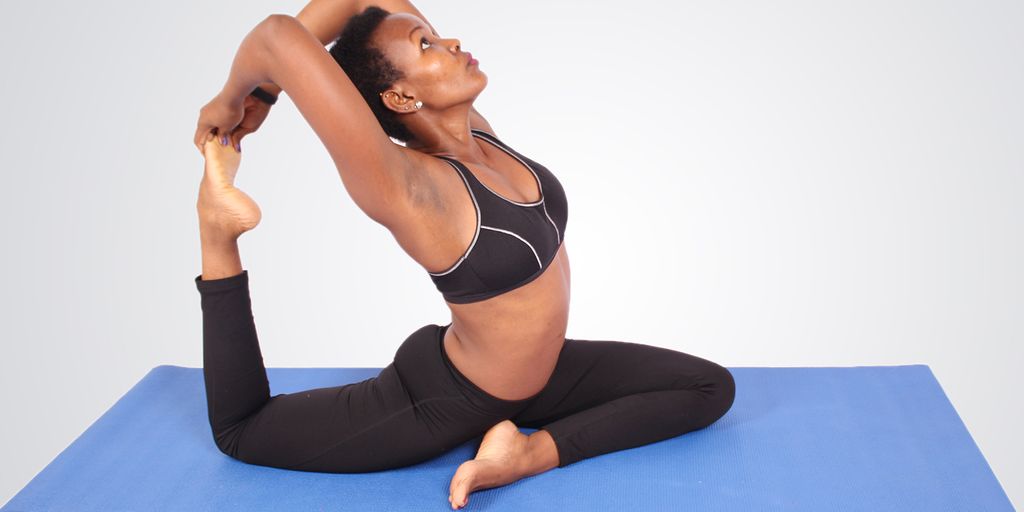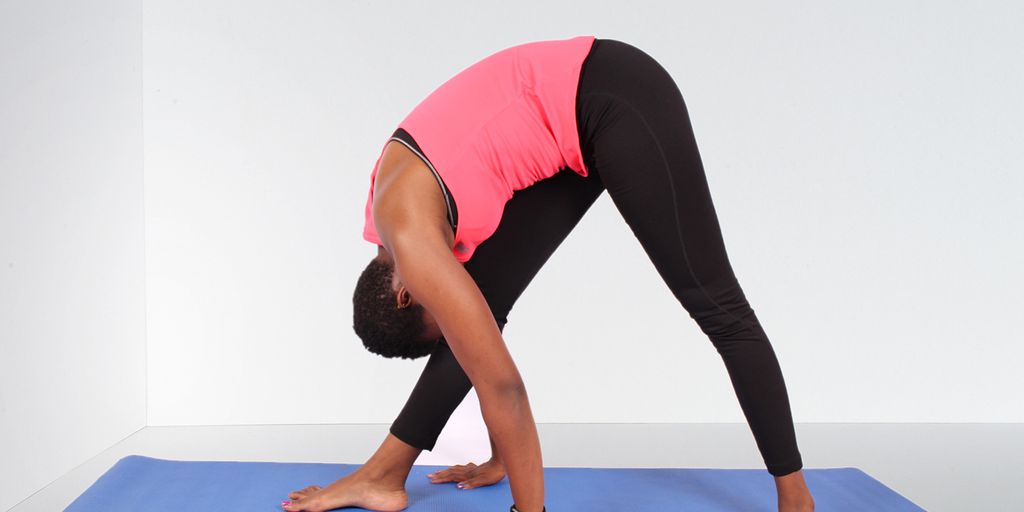
The Ultimate Guide to Choosing an E C O Yoga Mat
Choosing an ECO yoga mat is an essential step for any environmentally conscious yogi. These mats are designed to be sustainable, using materials and manufacturing processes that reduce harm to the planet. In this ultimate guide, we will explore everything you need to know about ECO yoga mats, from understanding their benefits and materials to factors to consider when purchasing one, and how to care for your mat. Whether you're a seasoned practitioner or a beginner, this guide will help you make an informed decision.
Key Takeaways
- ECO yoga mats are made from sustainable materials and have a lower environmental impact compared to traditional mats.
- Consider factors such as thickness, texture, and durability when choosing an ECO yoga mat to ensure it meets your practice needs.
- Top brands offer ECO yoga mats with various features and price ranges, so it's important to research and read reviews before purchasing.
- Proper care and maintenance can extend the life of your ECO yoga mat, making it a more sustainable investment.
- Comparing ECO yoga mats to traditional mats can help you understand the benefits and potential trade-offs in terms of performance and cost.
Understanding ECO Yoga Mats
What Makes a Yoga Mat ECO-Friendly?
An ECO-friendly yoga mat is designed with sustainability in mind, often using natural or recycled materials. These mats avoid harmful chemicals and are biodegradable, reducing environmental impact. It's slim pickings in the world of eco-friendly, non-toxic yoga mats, but the benefits are worth the search.
Benefits of Using ECO Yoga Mats
Using an ECO yoga mat offers numerous benefits, including a healthier practice environment and reduced exposure to toxins. These mats are often more durable and provide better grip, enhancing your yoga experience. Additionally, they contribute to a more sustainable lifestyle by minimizing waste and pollution.
Common Materials Used in ECO Yoga Mats
ECO yoga mats are typically made from materials such as natural rubber, jute, and organic cotton. These materials are not only sustainable but also provide excellent performance. For instance, natural rubber offers superior grip and cushioning, while jute adds a unique texture and durability. Organic cotton is soft and absorbent, making it ideal for hot yoga sessions.
Factors to Consider When Choosing an ECO Yoga Mat
Thickness and Cushioning
When selecting an ECO yoga mat, thickness and cushioning are crucial for comfort and joint protection. A thicker mat provides more cushioning, which is beneficial for practices that involve a lot of kneeling or lying down. However, a mat that is too thick can make balancing poses more challenging. Typically, mats range from 1/16 inch to 1/4 inch in thickness.
Texture and Grip
The texture of a yoga mat affects its grip and how much traction it provides. A mat with a good grip prevents slipping, which is essential for maintaining poses, especially in styles like hot yoga. Some mats have a natural, rough texture, while others are smooth with a non-slip coating. Consider your practice style and personal preference when choosing the texture.
Durability and Longevity
Durability is a key factor in choosing an ECO yoga mat. High-quality mats are designed to withstand regular use without wearing out quickly. Look for mats made from durable materials like natural rubber or jute, which offer longevity and are more sustainable. Investing in a durable mat can save you money in the long run and reduce waste.
Remember, choosing the right yoga mat is essential for a comfortable and effective practice. Consider factors such as thickness, material, texture, and grip to find the perfect mat for your needs.
Top ECO Yoga Mat Brands
When choosing an ECO yoga mat, it's essential to consider the reputation of the brand. Look for brands that have consistently positive reviews and are well-regarded in the yoga community. This can often be found in a detailed yoga blog: ultimate guide on washing yoga mat, benefits of wide mat, top brands, folding mat guide, flip flops, extra large mat benefits, and men's yoga mat guide.
Brands that prioritize sustainability often use eco-friendly materials and ethical manufacturing processes. Check if the brand has certifications or partnerships with environmental organizations. This ensures that your purchase supports sustainable practices and contributes to a healthier planet.
ECO yoga mats can vary significantly in price. It's important to find a mat that offers good value for money. Consider the durability, material quality, and additional features when comparing prices. A higher upfront cost may be justified if the mat lasts longer and performs better, providing better overall value.
Caring for Your ECO Yoga Mat
Cleaning and Maintenance Tips
To keep your ECO yoga mat in top condition, it's essential to clean it regularly. Start by laying your yoga mat flat on a clean surface. Use a damp cloth or a gentle cleaning wipe to remove any visible dirt or sweat. Avoid using harsh chemicals as they can damage the mat's material. Regular cleaning not only extends the life of your mat but also ensures a hygienic practice environment.
Storage Recommendations
Proper storage of your ECO yoga mat can significantly impact its longevity. Always roll your mat with the top side facing out to prevent curling. Store it in a cool, dry place away from direct sunlight to avoid material degradation. If possible, use a yoga mat bag for added protection.
When to Replace Your ECO Yoga Mat
Even with the best care, ECO yoga mats will eventually need to be replaced. Signs that it's time for a new mat include noticeable wear and tear, loss of grip, and reduced cushioning. Typically, a high-quality ECO yoga mat should last between 1 to 2 years with regular use.
Taking good care of your ECO yoga mat not only enhances your practice but also contributes to a more sustainable lifestyle.
Where to Buy ECO Yoga Mats
When it comes to purchasing an ECO yoga mat, there are several options available to suit your preferences and needs. Online retailers offer a wide range of ECO yoga mats, making it easy to compare different brands and read customer reviews. Websites like Amazon, YogaOutlet, and specialized eco-friendly stores provide a variety of choices.
Physical Stores
If you prefer to see and feel the mat before buying, physical stores are a great option. Many sporting goods stores, yoga studios, and health and wellness shops carry ECO yoga mats. This allows you to test the texture and grip of the mat in person.
Second-Hand Options
For those looking to reduce their environmental impact even further, second-hand options are worth considering. Websites like eBay, Craigslist, and local thrift stores often have pre-owned ECO yoga mats in good condition. This not only saves money but also promotes sustainability by giving products a second life.
Choosing the right place to buy your ECO yoga mat can make a significant difference in your overall satisfaction and the environmental impact of your purchase.
Comparing ECO Yoga Mats to Traditional Mats
Environmental Impact
ECO yoga mats are designed with sustainability in mind, often using natural or recycled materials. Traditional mats, on the other hand, are typically made from PVC, which is not biodegradable and can be harmful to the environment. Choosing an ECO mat can significantly reduce your carbon footprint.
Performance Differences
When it comes to performance, ECO mats offer excellent grip and cushioning, comparable to traditional mats. However, some users find that traditional mats provide a slightly better grip when wet. It's essential to consider your specific needs and preferences.
Cost Comparison
ECO yoga mats can be more expensive upfront compared to traditional mats. Here's a quick comparison:
| Type of Mat | Average Cost Range |
|---|---|
| ECO Yoga Mat | $50 - $120 |
| Traditional Mat | $20 - $80 |
While the initial investment in an ECO mat is higher, the long-term benefits for both your health and the environment can outweigh the cost.
When it comes to choosing the right yoga mat, comparing ECO Yoga Mats to traditional mats can make a significant difference in your practice. ECO Yoga Mats offer superior grip, durability, and are made from environmentally friendly materials, making them a great choice for both you and the planet. Ready to make the switch? Visit our website to explore our wide range of ECO Yoga Mats and find the perfect one for your practice.
Conclusion
Choosing the right eco-friendly yoga mat is a crucial step in enhancing your yoga practice while also contributing positively to the environment. By considering factors such as material, thickness, texture, and sustainability, you can find a mat that aligns with your values and meets your needs. Remember, the best yoga mat is one that supports your practice and respects the planet. Take your time to research and invest in a mat that will serve you well for years to come. Happy practicing!
Frequently Asked Questions
What defines an ECO yoga mat?
An ECO yoga mat is made from environmentally friendly materials and manufacturing processes that minimize harm to the planet.
Are ECO yoga mats more expensive than traditional mats?
ECO yoga mats can be more expensive due to the sustainable materials and ethical practices used, but they offer long-term value and environmental benefits.
How do I clean my ECO yoga mat?
Clean your ECO yoga mat with a mixture of water and mild soap. Avoid using harsh chemicals, and always air dry it to maintain its quality.
What materials are commonly used in ECO yoga mats?
Common materials include natural rubber, organic cotton, jute, and TPE (thermoplastic elastomer). These materials are biodegradable and non-toxic.
How long do ECO yoga mats last?
The lifespan of an ECO yoga mat depends on usage and care, but they typically last several years with proper maintenance.
Can I use an ECO yoga mat for all types of yoga?
Yes, ECO yoga mats are versatile and can be used for various types of yoga, including hot yoga, vinyasa, and restorative practices.


